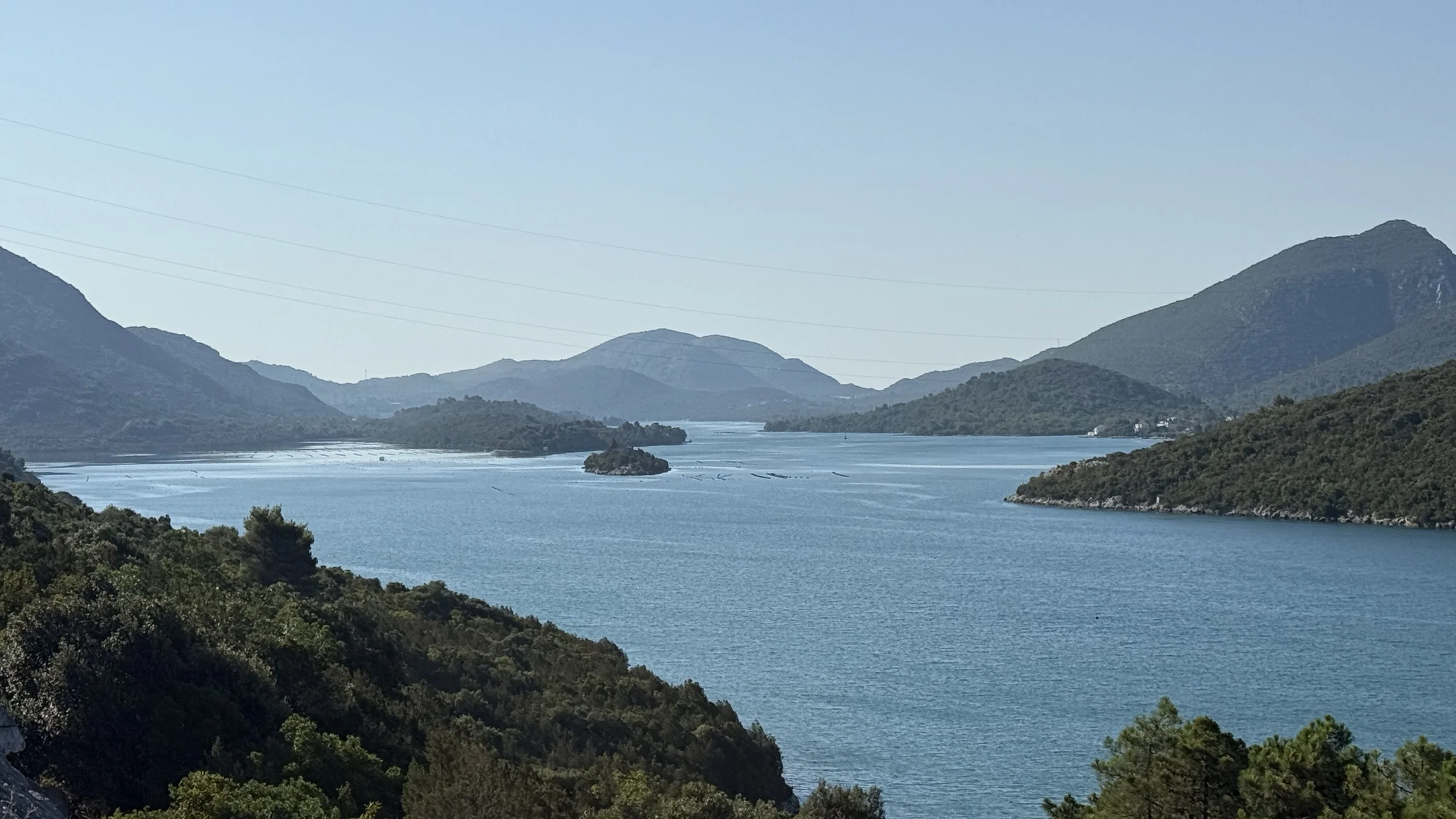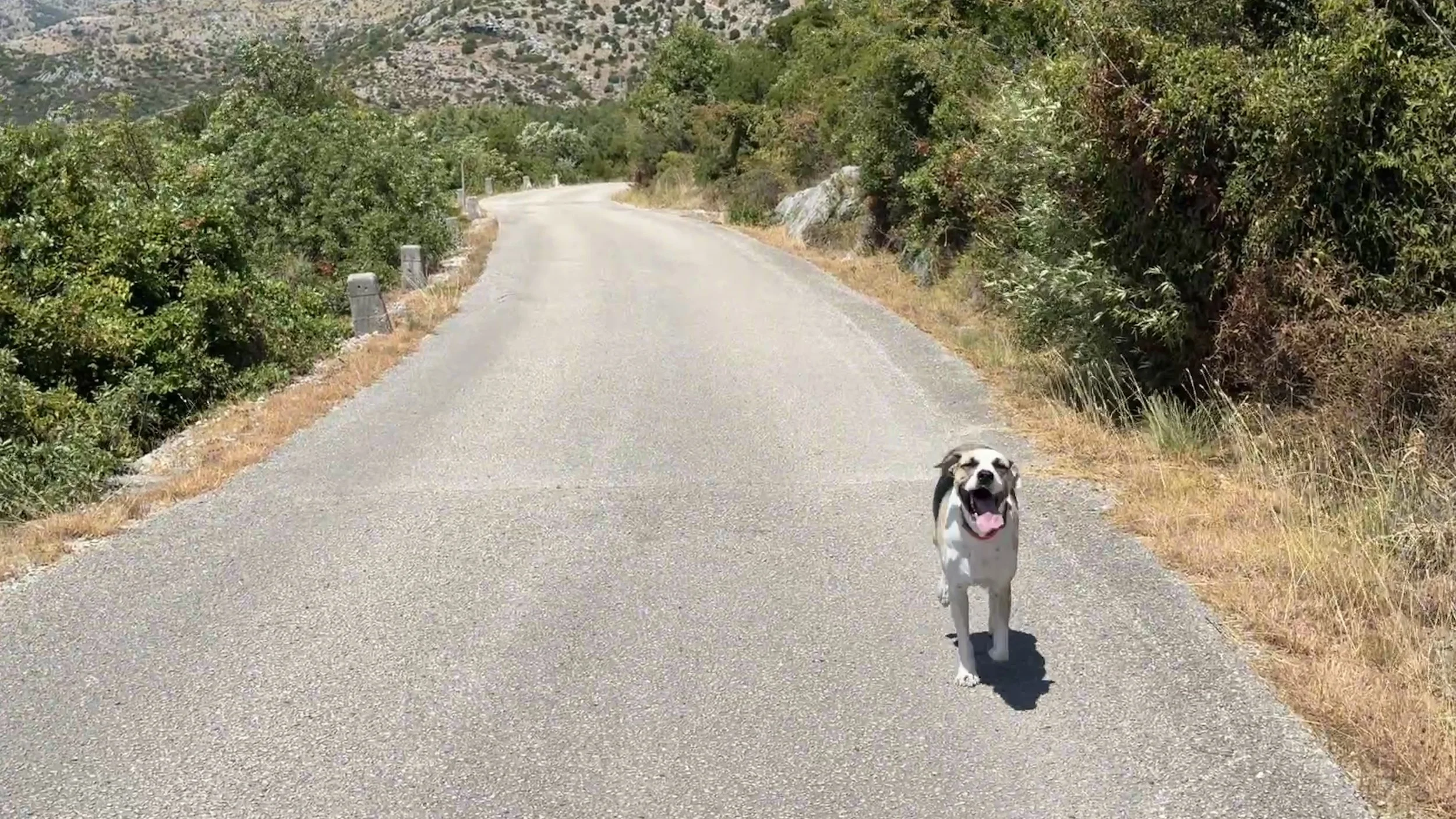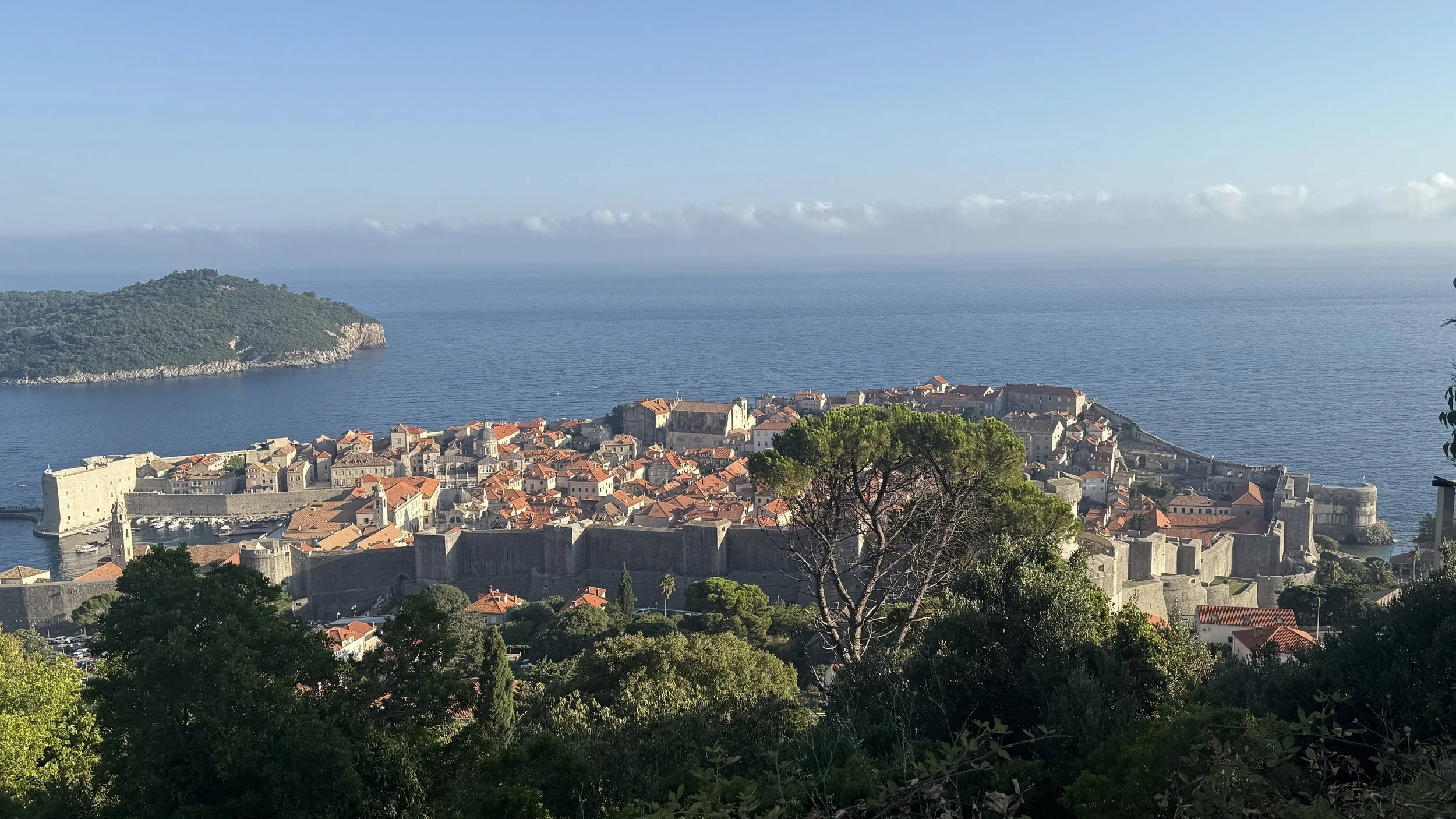Day 73 - July 22nd: Big One
Kamenice to Dubrovnik: 37.3 miles / 2,065 total
I was elated after yesterday’s 56K—feeling strong, no issues with the left inner quad, and our whole team was in sync. After a quick shower, Christina and I were seated for dinner by 6:30 PM, the only ones in the hotel restaurant. Convenience was the priority. I was horizontal by 8, working through logistics and the daily post.
I decided to stay for breakfast at 7 AM today—60K ahead on remote roads meant I needed a strong start nutritionally. Christina and Jax dropped me off at 7:30 AM to begin what would be the longest day of this entire trip.
The route dropped from Kamenice down to the Croatian border, a 3K descent. Across the bay, I saw what looked like a massive crater carved into the Klek Peninsula. It turns out this distinctive scar is a karst sinkhole, typical of the limestone terrain here—formed by millennia of erosion and underground water systems.
At the checkpoint, a young dark-haired officer looked serious. “Your passport, cigarettes, and drugs,” he said, completely deadpan. I tried not to laugh as I unzipped my hydration vest to grab my passport.
Back in Croatia. I crossed the Most hrvatskih branitelja, a small bridge named for the “Croatian Defenders” of the 1990s war, opening onto a broad waterway dotted with islands.
Then came the first big climb. The heat hit hard—shirt soaked through before I’d even started pushing. The adrenaline faded, so I walked the full 7K up. At the top, I found a restaurant, refilled water, and had a coffee—18K in.
I cruised downhill to a beach and then climbed again, turning off D8 onto an old mountain road. It was clearly the original coastal road, built before the modern highway. The stone pylons on either side gave it away—remnants of 19th-century Austro-Hungarian engineering, possibly older, following the same lines used for centuries to traverse the rugged coast. It was brutally steep—an 8K climb—and almost completely empty.
Christina drove up to me along the way and I told her to go up 2.5K so Jax and I could have some together time. I found her parked beside a man in a car—the only other vehicle I’d seen on the entire road. She said he was lost. Maybe. He drove off quickly once I arrived. Only Tina!
What looked like the top was a false summit. Christina and Jax continued to Dubrovnik. I pushed on. At the true crest was Crkva Presvetog Trojstva, a small church with an adjoining graveyard. Nearby lay Makjovi, an old stone village, partially abandoned, tucked into the folds of the mountain.
I looked back at where I had come from - the valley and the mountain behind - it was hard to fathom.
Then, finally, I crested to views of the sea and a rough, jagged coastline ahead.
The descent led to a beach, then back up again—classic Dalmatian terrain. I passed through Dubravica and Brsečine, quiet mountain-edge towns clinging to the hillside.
At the base of another curve, I reached Trsteno, home to the oldest arboretum in this part of Europe, established in the 15th century. In front of it stood an enormous Oriental Plane Tree, over 500 years old, with a trunk so massive it feels like a living monument. The arboretum itself was developed by a noble family of the Dubrovnik Republic, a sign of how deep their connection was to nature, art, and the sciences.
Then it was back up again, off D8 and onto that same ancient road system—winding inland before merging again with the modern highway about 10K out from Dubrovnik. By now, I was running on fumes. My body was hurting from days of hard mileage in the heat. I flipped on autopilot.
And then there it was.
The walled city, perched above the sea—stone towers, red-tiled roofs, and bright blue below. It was spectacular. Dubrovnik is one of Europe’s most storied cities—a walled stronghold that rises from the Adriatic like something out of a myth. It was founded in the 7th century and grew into the powerful Republic of Ragusa, a maritime city-state that rivaled Venice in trade, diplomacy, and wealth. For centuries, it thrived on its independence and naval savvy, becoming one of the first places in the world to abolish slavery, in 1416. The Old Town, now a UNESCO World Heritage Site, is a perfectly preserved maze of limestone streets, red-roofed houses, churches, towers, and stone walls stretching nearly two kilometers around the city. Though it suffered heavy damage during the 1991–92 siege in the Croatian War of Independence, it was meticulously restored—stone by stone—and now stands not just as a postcard-perfect destination, but as a symbol of resilience, cultural pride, and survival.
I descended on foot via a winding pedestrian path that dropped me into the old town. Narrow lanes, ancient staircases, and thick medieval walls surrounded me. Then I saw Christina and Jax walking toward me, smiling. Day done. Mission accomplished.
We will be staying in an apartment right in the center.
Tomorrow, I rest. I’ll take the day to explore this place—one of the most storied cities on this continent and recast the final part of this journey.
Thanks for following and for the support.
Cheers,
David.














